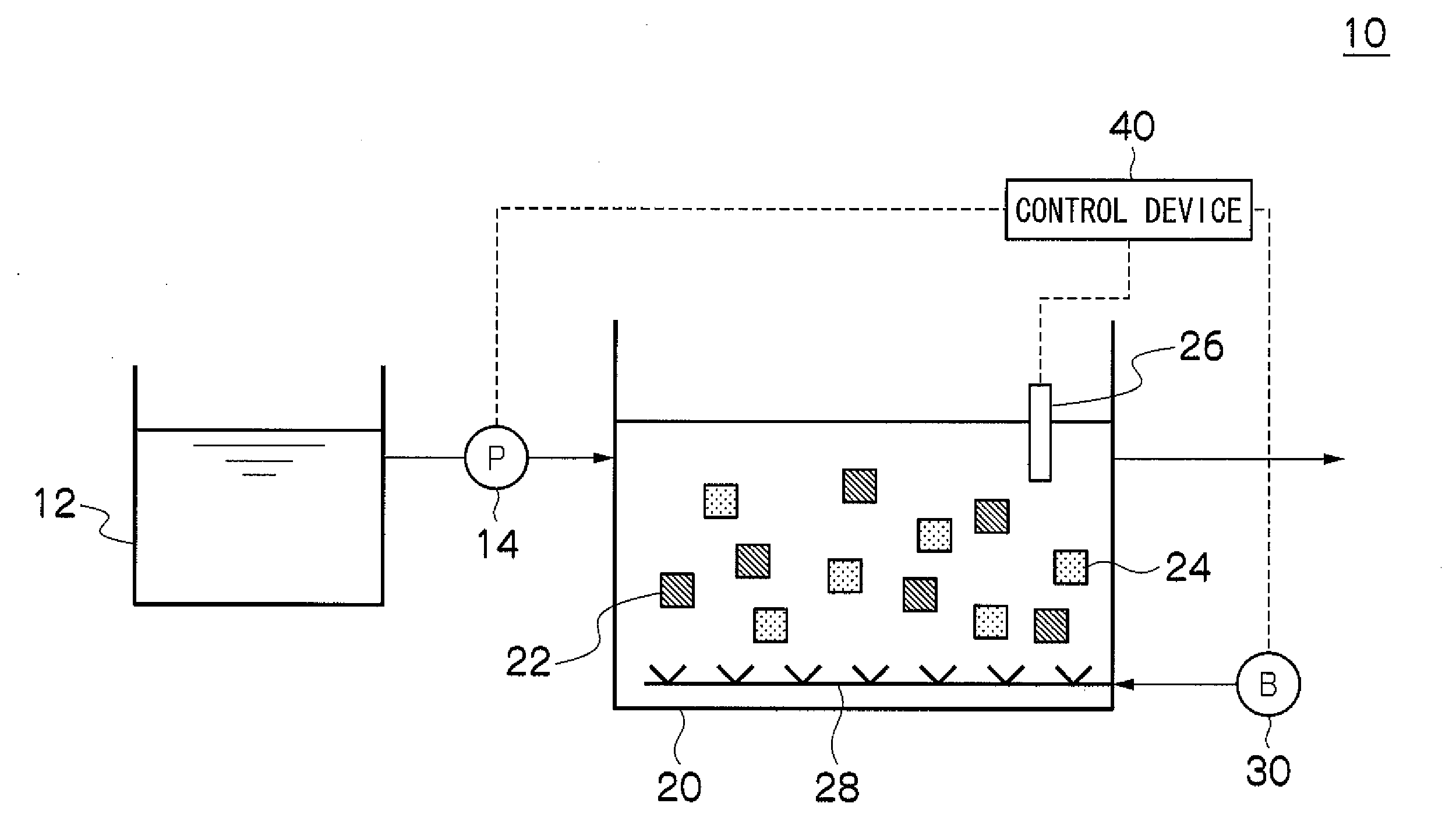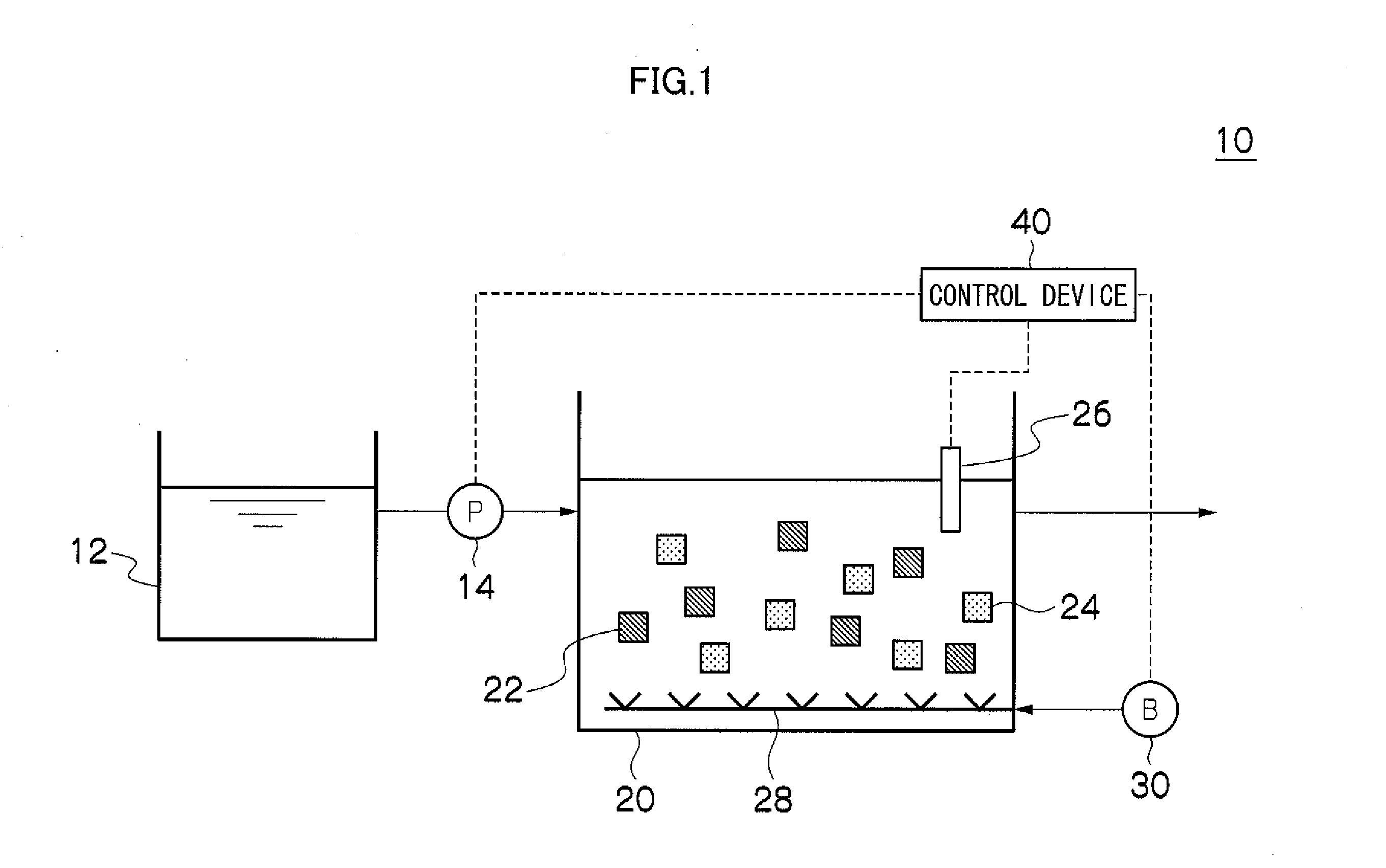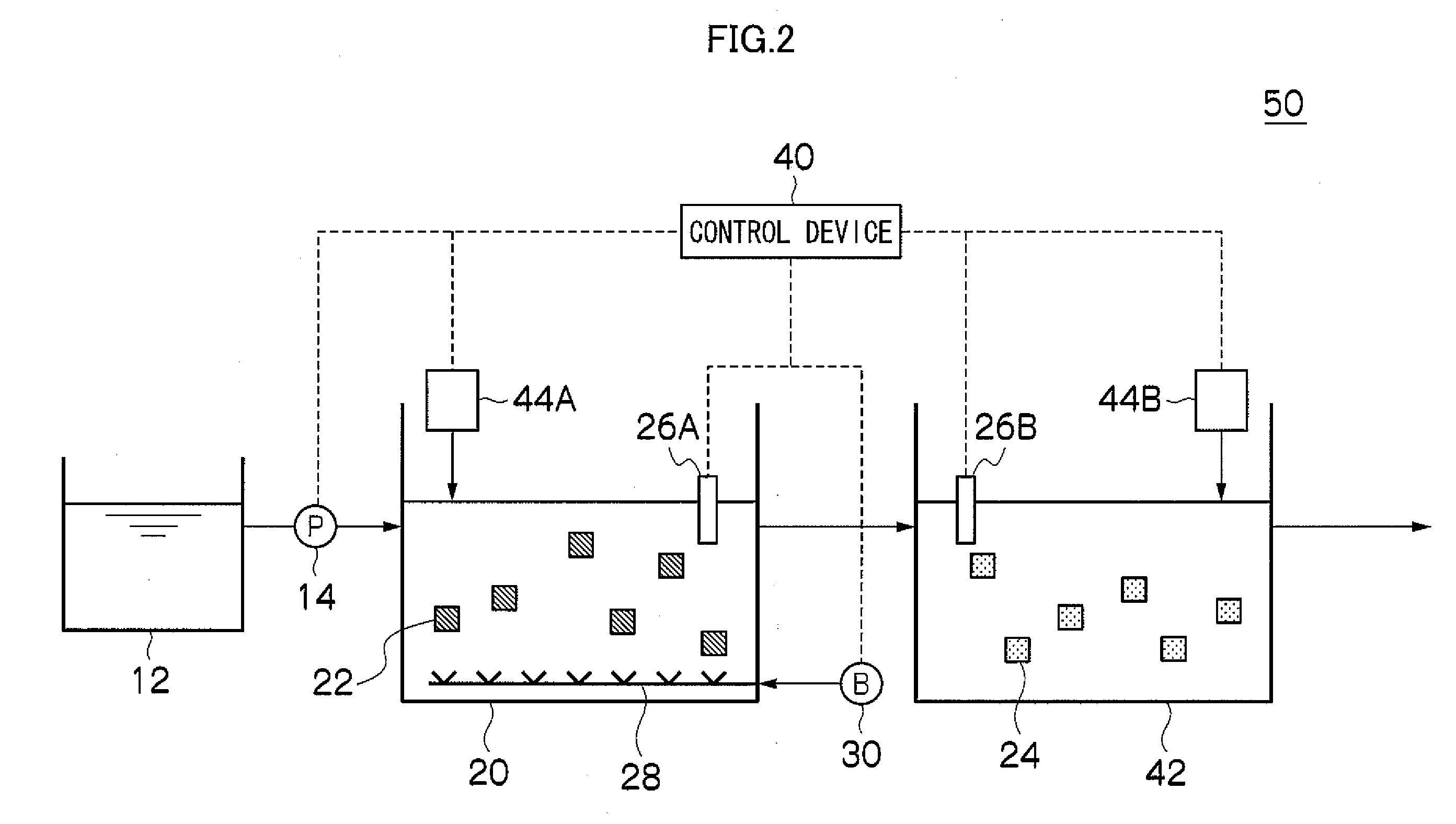Wastewater treatment method and wastewater treatment apparatus
a wastewater treatment and wastewater technology, applied in biological water/sewage treatment, filtration separation, separation processes, etc., can solve the problems of nitrification reaction, denitrification reaction becoming a rate-limiting factor, and inability to rapidly treat wastewater, so as to achieve rapid wastewater treatment and stably and rapidly perform wastewater treatment.
- Summary
- Abstract
- Description
- Claims
- Application Information
AI Technical Summary
Benefits of technology
Problems solved by technology
Method used
Image
Examples
example 1
Preparation of Nitrification Carrier 22
[0097]An activated sludge containing nitrifying bacteria was entrapped and immobilized in a polyethylene glycol-based gel which had been molded into a cube of 3 mm square. The nitrification rate of the entrapping immobilization pellets at this time was 0.5 kg-N / m3-carrier / day or less.
[0098]This entrapping immobilization pellets in an amount of 0.2 L were fed into a cylindrical reactor (culture tank) having a volumetric capacity of 2 L. A nitrification carrier 22 was prepared by making ammonium wastewater (inorganic synthetic wastewater) flow into this reactor and acclimating the nitrifying bacteria at a temperature maintained at 30° C. in the reactor for 1 month. FIG. 7 is a table showing the water quality of an ammonium wastewater which was used for acclimating nitrifying bacteria.
[0099]When the nitrifying bacteria were acclimated, the wastewater was aerated and stirred, the amount of dissolved oxygen (DO) in the reactor was maintained at 2 to...
example 2
[0108]A nitrification carrier 22 and a denitrification carrier 24 were prepared under the same acclimation condition as in Example 1.
[0109]The obtained nitrification carrier 22 and the denitrification carrier 24 mixed in various ratios were loaded (packed) in the same reactor as in Example 1. Specifically, the volume fractions of the denitrification carrier 24 in the total volume of the nitrification carrier 22 and the denitrification carrier 24 were adjusted to 75%, 65%, 50%, 40%, 25% and 20%. In the above operation, the total volume of the nitrification carrier 22 and the denitrification carrier 24 was adjusted to 0.5 L in any case.
[0110]After this, a synthetic wastewater having the water quality shown in FIG. 7 was made to flow into the reactor, and a wastewater treatment operation was conducted under the same conditions as in Example 1. While the wastewater was treated, the amount of dissolved oxygen in the reactor was maintained at 2.0 to 3.0 mg / L. The water temperatures were a...
example 3
[0114]A start-up test on a reactor was conducted by using an unacclimated nitrification carrier 22 and an acclimated denitrification carrier 24 in the following procedure.
[0115]An activated sludge containing nitrifying bacteria was entrapped and immobilized in a polyethylene glycol-based gel which had been molded into a cube of 3 mm square. The nitrification rate of the entrapping immobilization pellets at this time was 0.5 kg-N / m3-carrier / day or less. In addition, a denitrification carrier which was acclimated under the same conditions as in Example 1 was used for the acclimated denitrification carrier 24.
[0116]The above described unacclimated nitrification carrier in an amount of 0.3 L and the acclimated denitrification carrier in an amount of 0.2 L were fed into the reactor (having a volumetric capacity of 2 L) which was used in Example 1. The nitrification carrier was acclimated by making ammonium wastewater having the water quality shown in FIG. 7 flow into this reactor. In the...
PUM
| Property | Measurement | Unit |
|---|---|---|
| concentration | aaaaa | aaaaa |
| concentration | aaaaa | aaaaa |
| volume ratio | aaaaa | aaaaa |
Abstract
Description
Claims
Application Information
 Login to View More
Login to View More - R&D
- Intellectual Property
- Life Sciences
- Materials
- Tech Scout
- Unparalleled Data Quality
- Higher Quality Content
- 60% Fewer Hallucinations
Browse by: Latest US Patents, China's latest patents, Technical Efficacy Thesaurus, Application Domain, Technology Topic, Popular Technical Reports.
© 2025 PatSnap. All rights reserved.Legal|Privacy policy|Modern Slavery Act Transparency Statement|Sitemap|About US| Contact US: help@patsnap.com



